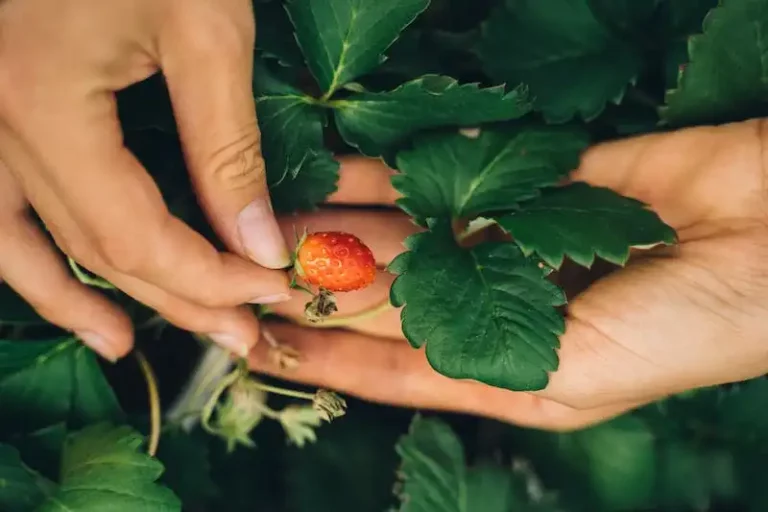If you are a fan of colorful and eye-catching foliage, then crotons are the plants for you. These tropical gems are commonly known for their stunning multicolored leaves that can add a touch of brilliance to any garden or indoor space. With their bold and variegated appearance, crotons are sure to be the center of attention.
Crotons, scientifically known as Codiaeum variegatum, are native to the tropical regions of Southeast Asia. They are low-care plants that are relatively easy to grow, making them a perfect choice for both experienced and novice gardeners. Once established, crotons can tolerate a wide range of conditions, whether it’s high or low temperatures, making them quite versatile.
One striking feature of crotons is their diverse foliage. The leaves come in various shapes, sizes, and colors, ranging from bright golden yellows to deep reds and purples. Some croton varieties have large, leathery leaves that add a touch of drama to any space, while others feature smaller, more delicate foliage that creates a more subtle effect. Whether you prefer a vibrant splash of color or a more subdued look, there is a croton variety to suit your preferences.
When it comes to care, crotons have a few specific requirements. They prefer to be watered regularly, but not excessively, as over-watering can cause root rot. Crotons also thrive in well-drained soil and enjoy being placed in a location with bright, indirect light. However, they can tolerate lower light conditions, like those found indoors, making them suitable for homes and offices.
One important thing to note is that crotons are toxic to pets, so it’s essential to keep them away from curious animals. Additionally, crotons are sensitive to changes in temperature, so avoid placing them near drafts or in areas with fluctuating temperatures.
In conclusion, crotons are an excellent choice for anyone looking to add a touch of tropical elegance to their garden or indoor space. These easy-care plants offer a wide range of colors and foliage options, making them an ideal choice for both novice and experienced gardeners. With their vibrant and variegated leaves, crotons are sure to be the stars of any green space. So why not give them a try and enjoy the magnificent effect they can bring to your home or garden?
Croton Care
Crotons are a popular houseplant known for their vibrant, multicolored leaves. They are native to tropical regions and are known for their unique leaf shapes and colors. If you are considering adding a croton to your plant collection, here are some tips on how to care for them:
- Crotons need bright, indirect light to thrive. Placing them near a window where they can get plenty of sunlight is the best option.
- They’re heavy feeders and need regular fertilization. Use a balanced, water-soluble fertilizer and follow the instructions on the packaging.
- Crotons like to be kept in a warm environment. They prefer temperatures between 60-85°F (15-29°C) and don’t tolerate cold drafts well.
- Water your croton regularly, keeping the soil evenly moist. They don’t like to dry out completely between waterings.
- Crotons can be sensitive to changes in temperature and humidity, so avoid placing them near air vents or drafty areas.
- If you notice that the leaves of your croton are falling off, it may be due to a change in location or environmental conditions. Try to keep the plant in a consistent spot.
- Crotons can be grown both indoors and outdoors, depending on your climate. In colder regions, they are typically kept as houseplants.
- There are many different varieties of crotons to choose from, with varying leaf colors and patterns. Some popular varieties include the Petra, Mammy, and Gold Dust crotons.
- Crotons belong to the Codiaeum variegatum species and are classified as tender perennials. They are part of the Euphorbiaceae family.
- If you have any more specific questions about croton care, don’t hesitate to ask a gardening expert or do further research.
In addition to their stunning foliage, crotons also have a unique plant sap that flows when the leaves are cut or damaged. This sap is milky and can cause skin irritation, so it’s important to handle crotons with care.
Crotons can be a bit finicky, but with the right care and attention, they can thrive and add a burst of color to your indoor or outdoor space. Whether you love their vibrant oranges and reds or prefer the subtler variegated varieties, crotons are sure to make a statement in your plant collection.
Crotons have some of the boldest and brightest foliage around. Often vividly marked with bright yellow, orange, and red, these exotic plants have a reputation for being high-maintenance due to their tropical nature. But once they acclimate to their new home, they’re quite low-care.
Crotons are known for their colorful leaves that come in a variety of shapes and sizes. The vibrant hues and striking patterns make them stand out in any garden or indoor space. With their bold colors, crotons can add a pop of brightness to any room or outdoor area.
While crotons do require some care, they are not as high-maintenance as their reputation suggests. One common misconception is that crotons need a lot of water. In reality, crotons prefer to be in slightly moist soil, but they don’t like to be over-watered. It’s important to let the top inch of soil dry out before watering again.
Another misconception is that crotons need a lot of light. While they do like bright light, direct sunlight can actually be too harsh for them. They prefer being placed near a window where they can get indirect light. If you notice that your croton’s leaves are turning yellow or falling off, it might be getting too much light.
Crotons are also sensitive to drafts and temperature changes. They don’t like cold air or sudden drops in temperature, so it’s important to keep them away from drafts and maintain a consistent temperature in their environment.
When it comes to fertilizing crotons, less is more. They don’t require heavy feeding and can actually be damaged by too much fertilizer. A slow-release fertilizer applied once or twice a year should be sufficient to keep your crotons happy and healthy.
Crotons can be grown both indoors and outdoors, depending on your climate. In colder regions, they are often grown as houseplants and can be brought outside during the summer months. In warmer regions, they can be planted directly in the ground and will grow into large, shrub-like plants.
In addition to their low-maintenance nature, crotons have the added benefit of being pet-friendly. Unlike some other tropical plants, crotons are non-toxic to cats and dogs, making them a great choice for pet owners.
Overall, crotons are a beautiful and versatile plant that can add a touch of tropical flair to any garden or indoor space. With their bold colors and unique leaf patterns, they are sure to make a statement. Whether you’re an experienced gardener or just starting out, crotons are a great choice for adding some excitement to your collection.
“`html
How to care for your Croton
As one of the most colorful houseplants, Crotons add a vibrant touch to any indoor or outdoor space. With their leathery and variegated foliage, they have earned the reputation of being a high-maintenance plant. However, with the right care, Crotons can thrive and become a stunning addition to your plant collection.
Here are some tips for caring for your Croton:
- Light: Crotons prefer bright, indirect light. They can tolerate some direct sun, but avoid placing them in extremely dark or drafty areas.
- Water: Keep the soil evenly moist, but not soggy. Water your Croton when the top inch of soil feels dry. Be careful not to overwater as this can lead to root rot.
- Temperature: Crotons prefer temperatures between 60-85°F (15-29°C). They can tolerate lower temperatures, but avoid exposing them to cold drafts or extreme temperatures.
- Humidity: Crotons thrive in humid environments. You can increase humidity levels by misting the foliage or placing a tray of water near the plant.
- Fertilizer: Feed your Croton with a balanced, water-soluble fertilizer every 2-3 months during the growing season.
- Pruning: Remove any yellow or damaged leaves to encourage new growth. You can also trim the plant to maintain its desired shape.
- Pests: Keep an eye out for common houseplant pests like mealybugs and spider mites. If you spot any, treat the plant with an appropriate insecticide.
In summary, Crotons are low-care plants that thrive in bright, humid environments. By following these care instructions, you can enjoy the vibrant and exotic nature of these beautiful plants for years to come.
Croton Magnificent
The Croton Magnificent is something truly special in the world of crotons. With its vibrant and bold colors, it is sure to catch the eye of anyone who sees it. This variety of croton is known for its unique combination of greens, yellows, and bright reds, creating a vividly colored plant that will liven up any space it is planted in.
Comments from croton enthusiasts often praise the Croton Magnificent for its stunning appearance and its ability to add a pop of color to any garden or indoor space. Many love how easy it is to care for, making it a great choice for both experienced and novice gardeners.
When placing the Croton Magnificent in your garden or home, it is important to choose a well-drained spot with plenty of sunlight. Crotons love to be watered regularly, so be sure to keep them moist. They are also known to benefit from being misted, as this helps to maintain the humidity levels they thrive in.
Crotons can be grown outside in warm temperatures, but they will need time to acclimate to the change. Usually, this involves gradually exposing them to higher temperatures. It’s best to consult a gardening manual or seek advice from a local nursery for specific instructions on acclimating your croton to the outdoors.
The Croton Magnificent is not a high-maintenance plant, but it does require some care to keep it looking its best. It’s important to regularly check the plant for any signs of pests or diseases and take appropriate action if needed. Pruning is also recommended to maintain its shape and to encourage new growth.
With its variegated leaves and vibrant colors, the Croton Magnificent is sure to be a standout in any garden or indoor space. So, if you’re looking for a plant that will add a splash of color and make a statement, the Croton Magnificent is definitely worth considering.




